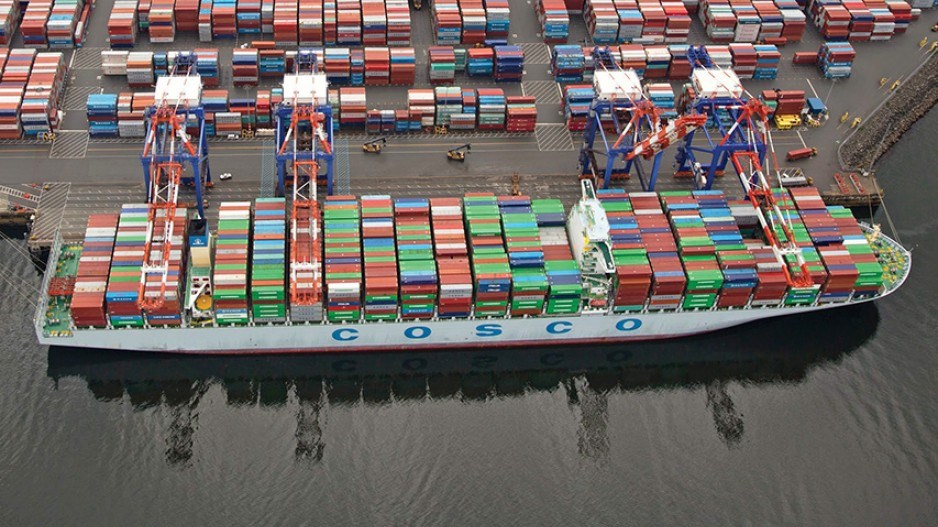A second Port of Prince Rupert container terminal will quadruple the northern port’s container-handling capacity and position it as Canada’s second-largest port, the Prince Rupert Port Authority said.
Port authority president Shaun Stevenson told Business in Vancouver that recently concluded master planning has identified property on Kaien Island, south of the existing Fairview Terminal ,as the home for a second container terminal to meet increasing demand.
Stevenson said the facility would be immediately adjacent to the Ridley Island coal and grain terminals and near the Alta Gas propane export terminal.
Stevenson said the land was originally planned to be the first container facility.
“This site has always been on our minds,” Stevenson said.
The new terminal would be able to handle 2.5 million 20-foot-equivalent units (TEUs) annually.
The expansion potential was identified after plans for a second expansion of Fairview was announced with DP World in 2018. Fairview’s handling capacity is expected to grow from its current 1.35 million TEUs to 1.8 million by 2022.
While he couldn’t confirm who the new terminal’s operator would be, Stevenson said, “We do have a very strong relationship with DP World.”
In August 2017, DP World unveiled a $200 million expansion to raise the Fairview container terminal’s annual capacity to 1.35 million TEUs from 776,412. The Dubai-based company operates more than 78 marine terminals around the world.
The port said both current and future terminal sites are close to supply chain logistics infrastructure.
Stevenson said the work is partly a response to increased capacity demand at the port.
Many west coast ports experienced cargo backlog problems in 2018, but Stevenson said Prince Rupert remains mindful of freight velocity.
“We’re not facing the congestions you’re seeing in other ports on the coast,” he said.
He said CN’s investments on its mainline have been a boost for the port.
Stevenson said trade jousting between the U.S. and China has created surges of traffic through the port.
“Certain U.S. products are no longer moving to China,” he said.
Moreover, he said, the port remains mindful of retaliatory gestures from Beijing after the arrest of telecommunications giant Huawei’s CFO Meng Wanzhou in Vancouver in December after an extradition warrant from Washington.
“We’re very mindful of canola exports – both bulk and container,” Stevenson said.
Prince Rupert is one of North America’s fastest growing container ports.
Container traffic jumped 12%, four times Vancouver’s 3% increase, to 1,036,009 TEUs last year from 926,539 in 2017.
All other Prince Rupert terminals combined saw a 10% increase, with 26.67 million tonnes (MMT) moved, compared with 24.17 MMT in 2017.
Prince Rupert Grain Ltd., which handles barley, canola, oats, soybeans and wheat, saw a 6% cargo decline from 5.77 MMT in 2017 to 5.44 MMT in 2018. Coke and coal traffic jumped 21% to 9.12 MMT from 7.56.
The port moved past the one-million-container-per-year mark on December 18.
Prince Rupert’s potential container terminal traffic received a boost March 27 when the world’s 11th-largest container carrier, ZIM Integrated Shipping Services, announced it had partnered with the 2M Alliance vessel-sharing agreement and added Prince Rupert to its North American trade loop.




